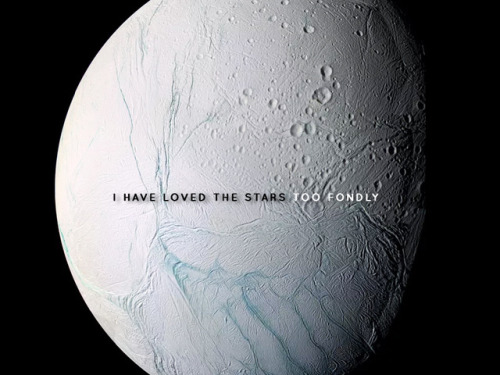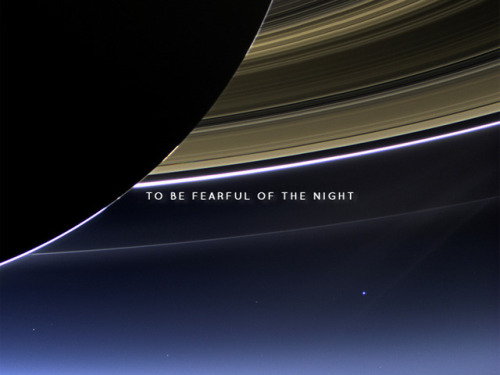Pluto Is A Dwarf Planet, And Thats Okay
Pluto is a dwarf planet, and thats okay
I love Pluto as much as anyone, and its *okay* that she’s a dwarf planet. Pluto has other cute friends out in her part of the woods
She just isn’t in the same plane of orbit as the other planets. Look at that orbit, its cray:

We can accept Pluto as she is, we don’t need to push her into a mold. Insisting that Pluto is a planet isn’t accepting her as her true self. She is a small, wild, free little dwarf planet and I love her
More Posts from Plutoisnotaplanet and Others




On September 15h, 2017 the Cassini spacecraft will end its 20-year mission by diving into the atmosphere of Saturn.
Goodnight, Cassini.
Pluto x Eris
i guess you could say their relationship is...strictly plutonic
having separate continents is so stupid im over it reblog if you miss pangaea
message from Pluto (SBE 4)
hello? it’s me, pluto. i might be light years away but that doesn’t explain why you stopped texting me, eris. i thought we were going to make this long distance thing work.
message from pluto 3
click this link for a video explaining why i’m not a planet: https://youtu.be/lXMskKTw3Bc
our next (and final?) space project is a brochure!! we have to do it on planets, which means no more pluto memes. mine is “a special sojourn on saturn” look at all that awesome alliteration. nothing beats alliteration. not even rhyming. okay maybe rhyming is pretty great but alliteration, the alliteration is totally on point here.

im a hipster guys, im about the size of russia i could go to starbucks
i found out recently that the very first trees did not rot when they died because the microbes that decompose trees hadnt evolved yet…which makes sense but it’s weird to think about. this actually caused a huge change in the climate at the time and many of these trees turned into coal because of it…
Getting to Mars: 4 Things We’re Doing Now
We’re working hard to send humans to Mars in the 2030s. Here are just a few of the things we’re doing now that are helping us prepare for the journey:
1. Research on the International Space Station

The International Space Station is the only microgravity platform for the long-term testing of new life support and crew health systems, advanced habitat modules and other technologies needed to decrease reliance on Earth.

When future explorers travel to the Red Planet, they will need to be able to grow plants for food, atmosphere recycling and physiological benefits. The Veggie experiment on space station is validating this technology right now! Astronauts have grown lettuce and Zinnia flowers in space so far.

The space station is also a perfect place to study the impacts of microgravity on the human body. One of the biggest hurdles of getting to Mars in ensuring that humans are “go” for a long-duration mission. Making sure that crew members will maintain their health and full capabilities for the duration of a Mars mission and after their return to Earth is extremely important.

Scientists have solid data about how bodies respond to living in microgravity for six months, but significant data beyond that timeframe had not been collected…until now! Former astronaut Scott Kelly recently completed his Year in Space mission, where he spent a year aboard the space station to learn the impacts of microgravity on the human body.
A mission to Mars will likely last about three years, about half the time coming and going to Mars and about half the time on the Red Planet. We need to understand how human systems like vision and bone health are affected and what countermeasures can be taken to reduce or mitigate risks to crew members.
2. Utilizing Rovers & Tech to Gather Data

Through our robotic missions, we have already been on and around Mars for 40 years! Before we send humans to the Red Planet, it’s important that we have a thorough understanding of the Martian environment. Our landers and rovers are paving the way for human exploration. For example, the Mars Reconnaissance Orbiter has helped us map the surface of Mars, which will be critical in selecting a future human landing site on the planet.

Our Mars 2020 rover will look for signs of past life, collect samples for possible future return to Earth and demonstrate technology for future human exploration of the Red Planet. These include testing a method for producing oxygen from the Martian atmosphere, identifying other resources (such as subsurface water), improving landing techniques and characterizing weather, dust and other potential environmental conditions that could affect future astronauts living and working on Mars.

We’re also developing a first-ever robotic mission to visit a large near-Earth asteroid, collect a multi-ton boulder from its surface and redirect it into a stable orbit around the moon. Once it’s there, astronauts will explore it and return with samples in the 2020s. This Asteroid Redirect Mission (ARM) is part of our plan to advance new technologies and spaceflight experience needed for a human mission to the Martian system in the 2030s.
3. Building the Ride
Okay, so we’ve talked about how we’re preparing for a journey to Mars…but what about the ride? Our Space Launch System, or SLS, is an advanced launch vehicle that will help us explore beyond Earth’s orbit into deep space. SLS will be the world’s most powerful rocket and will launch astronauts in our Orion spacecraft on missions to an asteroid and eventually to Mars.

In the rocket’s initial configuration it will be able to take 154,000 pounds of payload to space, which is equivalent to 12 fully grown elephants! It will be taller than the Statue of Liberty and it’s liftoff weight will be comparable to 8 fully-loaded 747 jets. At liftoff, it will have 8.8 million pounds of thrust, which is more than 31 times the total thrust of a 747 jet. One more fun fact for you…it will produce horsepower equivalent to 160,000 Corvette engines!

Sitting atop the SLS rocket will be our Orion spacecraft. Orion will be the safest most advanced spacecraft ever built, and will be flexible and capable enough to carry humans to a variety of destinations. Orion will serve as the exploration vehicle that will carry the crew to space, provide emergency abort capability, sustain the crew during space travel and provide safe re-entry from deep space return velocities.
4. Making it Sustainable
When humans get to Mars, where will they live? Where will they work? These are questions we’ve already thought about and are working toward solving. Six partners were recently selected to develop ground prototypes and/or conduct concept studies for deep space habitats.

These NextSTEP habitats will focus on creating prototypes of deep space habitats where humans can live and work independently for months or years at a time, without cargo supply deliveries from Earth.

Another way that we are studying habitats for space is on the space station. In June, the first human-rated expandable module deployed in space was used. The Bigelow Expandable Activity Module (BEAM) is a technology demonstration to investigate the potential challenges and benefits of expandable habitats for deep space exploration and commercial low-Earth orbit applications.
Our journey to Mars requires preparation and research in many areas. The powerful new Space Launch System rocket and the Orion spacecraft will travel into deep space, building on our decades of robotic Mars explorations, lessons learned on the International Space Station and groundbreaking new technologies.
Make sure to follow us on Tumblr for your regular dose of space: http://nasa.tumblr.com
-
 saphicspacesociety18 reblogged this · 1 year ago
saphicspacesociety18 reblogged this · 1 year ago -
 maguixinha0202-blog reblogged this · 3 years ago
maguixinha0202-blog reblogged this · 3 years ago -
 maguixinha0202-blog liked this · 3 years ago
maguixinha0202-blog liked this · 3 years ago -
 ladyofdeathgods liked this · 4 years ago
ladyofdeathgods liked this · 4 years ago -
 stellarmuffin reblogged this · 4 years ago
stellarmuffin reblogged this · 4 years ago -
 stellarmuffin liked this · 4 years ago
stellarmuffin liked this · 4 years ago -
 orime-stories liked this · 4 years ago
orime-stories liked this · 4 years ago -
 fairylightfairlybright reblogged this · 4 years ago
fairylightfairlybright reblogged this · 4 years ago -
 wiley-psittacine liked this · 4 years ago
wiley-psittacine liked this · 4 years ago -
 awkwardlitebrite reblogged this · 4 years ago
awkwardlitebrite reblogged this · 4 years ago -
 opulenceserene reblogged this · 4 years ago
opulenceserene reblogged this · 4 years ago -
 opulenceserene liked this · 4 years ago
opulenceserene liked this · 4 years ago -
 dale-the-human liked this · 4 years ago
dale-the-human liked this · 4 years ago -
 the-flying-trex liked this · 4 years ago
the-flying-trex liked this · 4 years ago -
 louisahassurrendered liked this · 4 years ago
louisahassurrendered liked this · 4 years ago -
 decemberchic reblogged this · 4 years ago
decemberchic reblogged this · 4 years ago -
 decemberchic liked this · 4 years ago
decemberchic liked this · 4 years ago -
 crispy-fart reblogged this · 4 years ago
crispy-fart reblogged this · 4 years ago -
 motherholland liked this · 4 years ago
motherholland liked this · 4 years ago -
 ameryth74 reblogged this · 4 years ago
ameryth74 reblogged this · 4 years ago -
 ameryth74 liked this · 4 years ago
ameryth74 liked this · 4 years ago -
 iamgonnatakecareofyou reblogged this · 4 years ago
iamgonnatakecareofyou reblogged this · 4 years ago -
 livingintherainofhell liked this · 4 years ago
livingintherainofhell liked this · 4 years ago -
 highvvalls liked this · 4 years ago
highvvalls liked this · 4 years ago -
 iwantlarry reblogged this · 4 years ago
iwantlarry reblogged this · 4 years ago -
 90sgrungelouis reblogged this · 4 years ago
90sgrungelouis reblogged this · 4 years ago -
 sexatoxbridge reblogged this · 4 years ago
sexatoxbridge reblogged this · 4 years ago -
 lemon-badgeress reblogged this · 4 years ago
lemon-badgeress reblogged this · 4 years ago -
 saint-laurel liked this · 4 years ago
saint-laurel liked this · 4 years ago -
 cinnamonandpancakes reblogged this · 4 years ago
cinnamonandpancakes reblogged this · 4 years ago -
 ailurinae reblogged this · 4 years ago
ailurinae reblogged this · 4 years ago -
 rainbowlack liked this · 4 years ago
rainbowlack liked this · 4 years ago -
 intyalote reblogged this · 4 years ago
intyalote reblogged this · 4 years ago -
 bpm413 liked this · 4 years ago
bpm413 liked this · 4 years ago -
 ayybeary liked this · 4 years ago
ayybeary liked this · 4 years ago -
 lemon-badgeress reblogged this · 4 years ago
lemon-badgeress reblogged this · 4 years ago -
 cinnamonandpancakes reblogged this · 4 years ago
cinnamonandpancakes reblogged this · 4 years ago -
 pseudesthesie liked this · 4 years ago
pseudesthesie liked this · 4 years ago -
 9hikers reblogged this · 4 years ago
9hikers reblogged this · 4 years ago -
 lajeunefilleenfeu reblogged this · 4 years ago
lajeunefilleenfeu reblogged this · 4 years ago -
 kinoctave liked this · 4 years ago
kinoctave liked this · 4 years ago -
 coolprius reblogged this · 4 years ago
coolprius reblogged this · 4 years ago -
 inkdrgn reblogged this · 4 years ago
inkdrgn reblogged this · 4 years ago
welcome to my space space (see what i did there) (space means two different things)
232 posts
